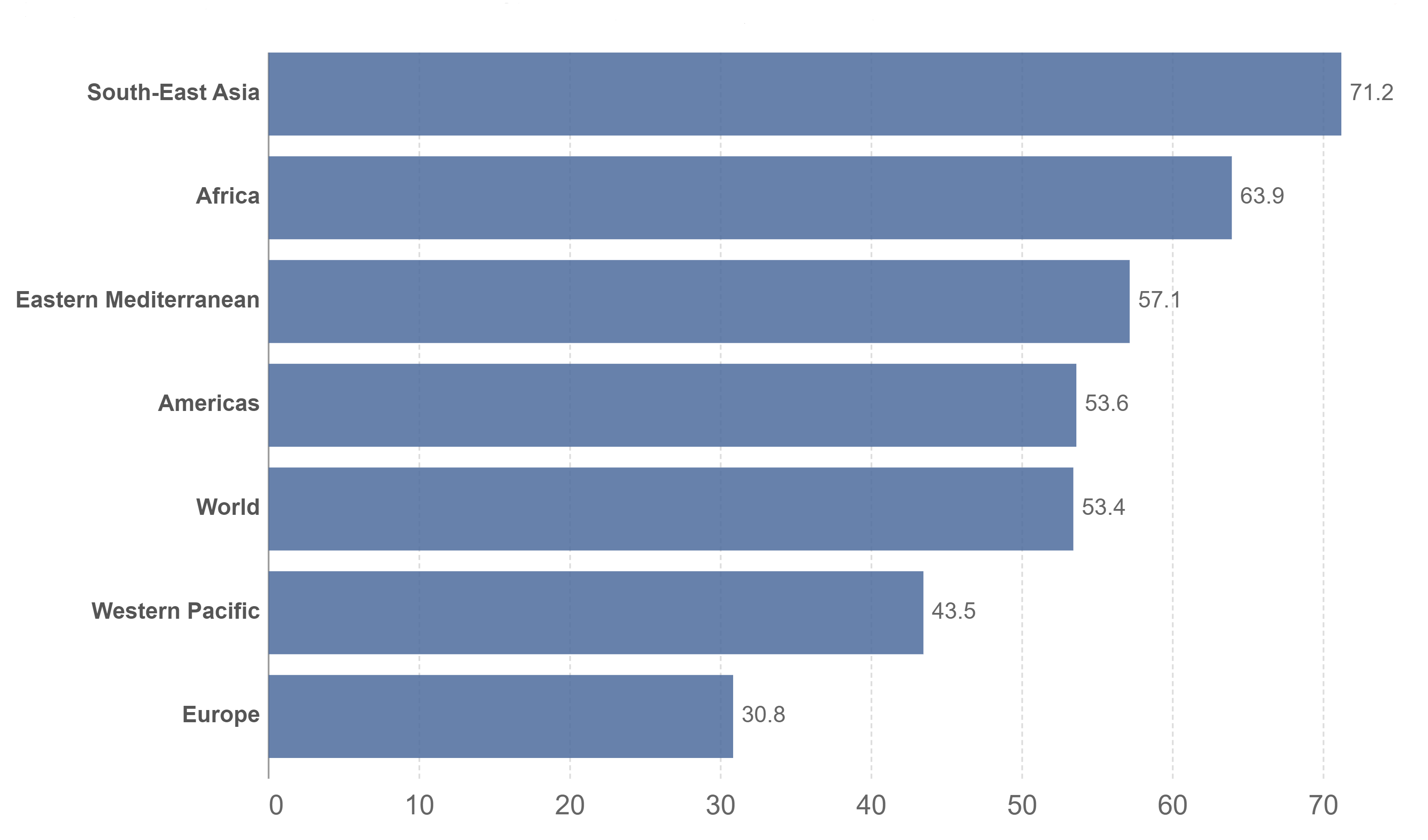
Influenza Mortality Rates
Influenza deaths now, throughout history, and across the globe
by Trends Staff
Flu season, for most Americans, is a normal part of seasonal changes in the colder months. Some may get the seasonal flu vaccine while some may not, but overall, very few of us consider the seriousness of the influenza virus, both throughout human history and today. An article and data feature from Our World in Data demonstrates the true scope of the mortality of influenza. While it may now appear as a common virus that is inconvenient and uncomfortable to catch, influenza is a deadly virus that should be taken seriously.
Influenza is a respiratory viral infection that is typically seasonal and causes cold-like symptoms. The infection spreads easily without proper sanitation and prevention methods in place. While most who contract influenza will experience mild symptoms and recover, influenza can be severe and deadly. There are several factors that influence the risk of death from influenza.
Age is the most critical factor – as Our World in Data discusses, a 60-year-old is ten times more likely to die of influenza than a 20-year-old. Additionally, as with most contractable diseases, overall health is important to the mortality risk of influenza. Chronic disease, weak immune systems, pregnancy, and other health risk factors can contribute to the deadliness of influenza. Variant strains of influenza can also prove to be more deadly, and the utilization of vaccines can also greatly reduce risk of death, especially for high-risk groups.
Fortunately, influenza is not nearly as deadly as it has been in the past. The average yearly flu season typically causes under half a million deaths worldwide. In the past, influenza viruses have manifested into worldwide deadly pandemics, including the largest influenza pandemic of Spanish Influenza in the early 1900s, which killed a total of 17.4 million people. Influenza mortality has declined greatly over time due to improvements in sanitation, vaccines, and the overall improvement of healthcare that reduces the comorbidities that can increase risk of death from influenza.
It is, nonetheless, critical to address that not all the world shares the advancements that have reduced the mortality of influenza. While Western, wealthier nations have been able to benefit from the advantages of advanced sanitation, healthcare, and vaccines, much of the world continues to struggle for better healthcare, and thus experience a heavier burden during flu seasons. Countries in South America, Africa, and South Asia often have much higher death rates from influenza than countries in Europe and North America. The inequality of healthcare between the developed world and the developing world is illustrated distinctly by disproportionate mortality from influenza.
While influenza is becoming less deadly, it should still be taken seriously as a potentially deadly infection, especially for those at high-risk. Thankfully, there are many things we can do to prevent infection.
